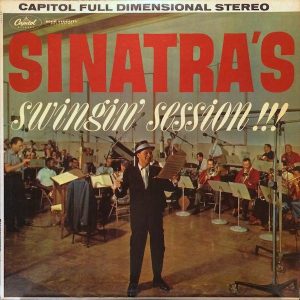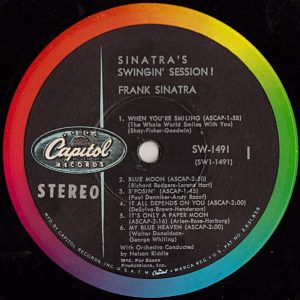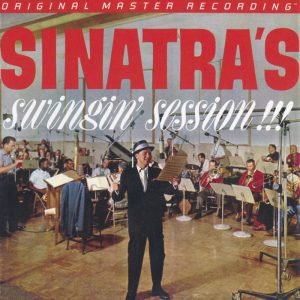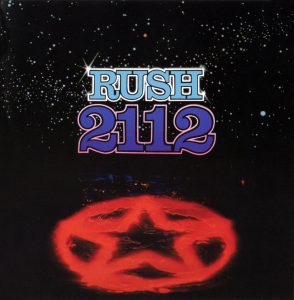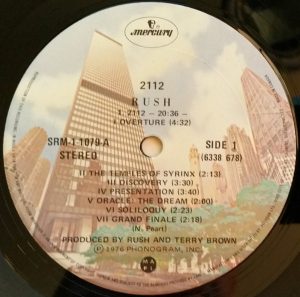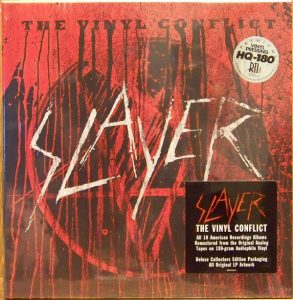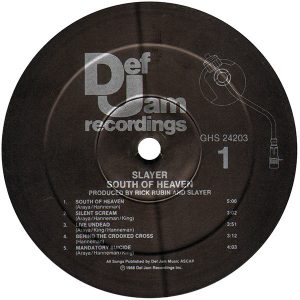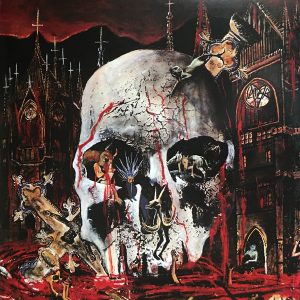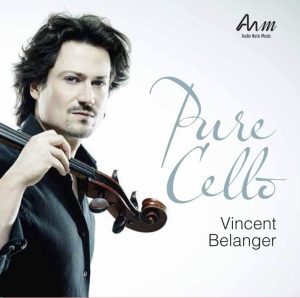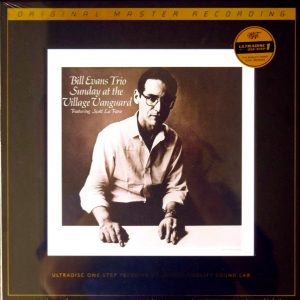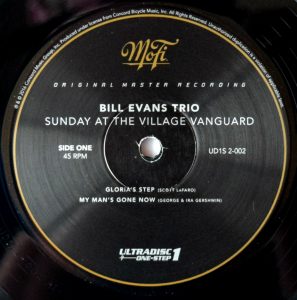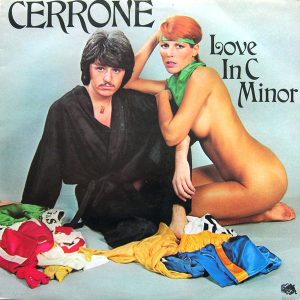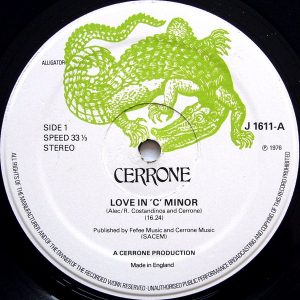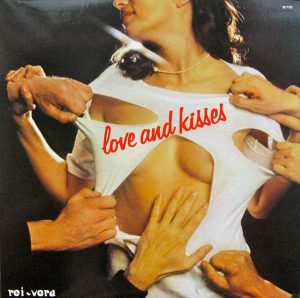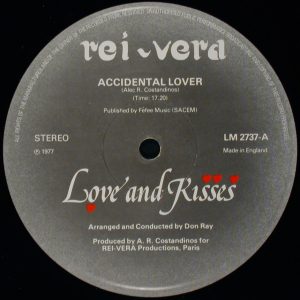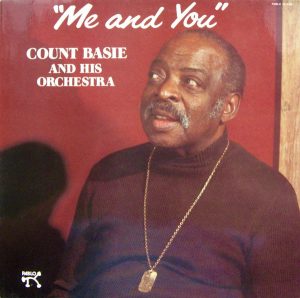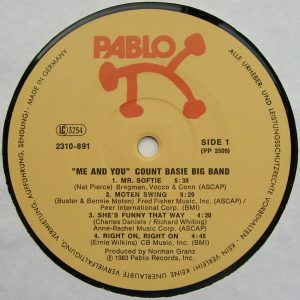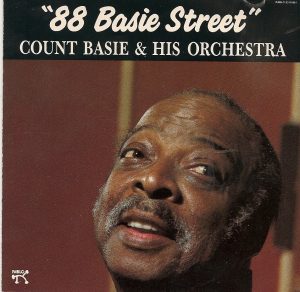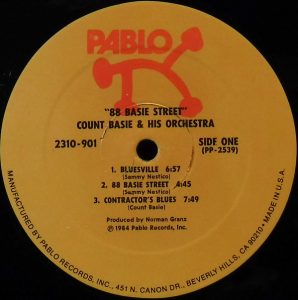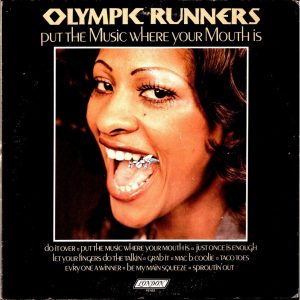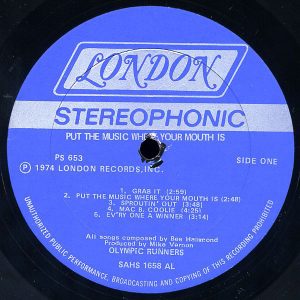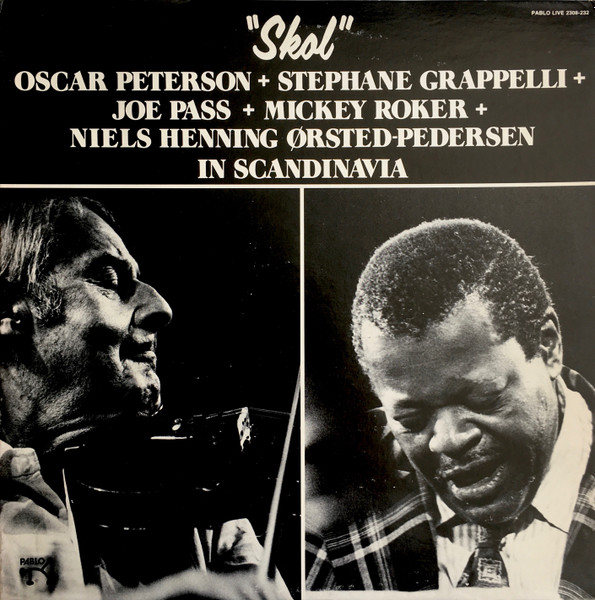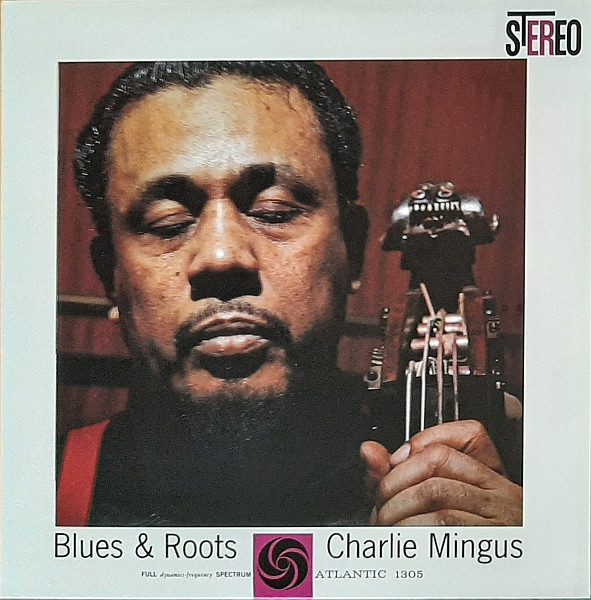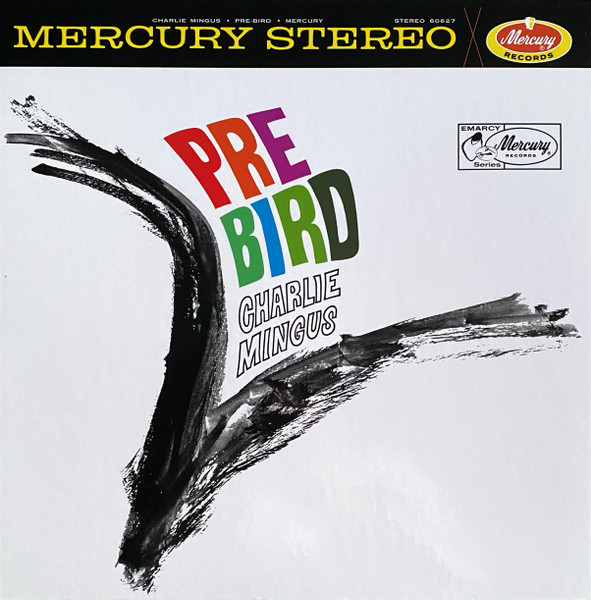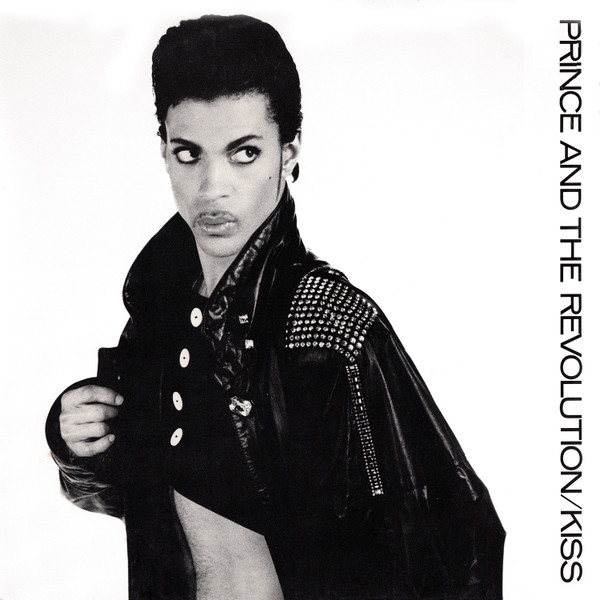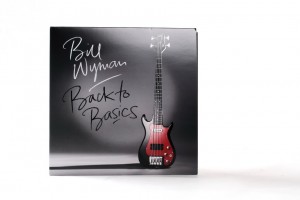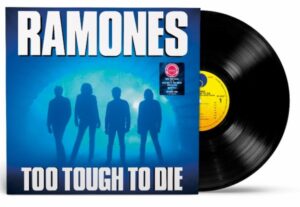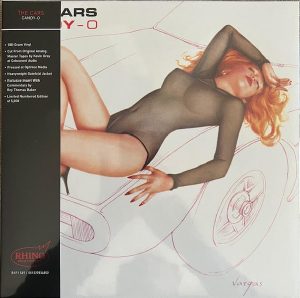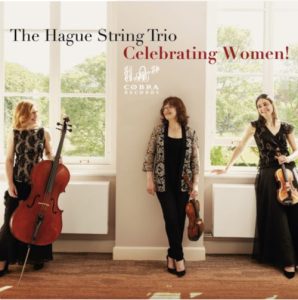This is an ongoing project by Claude Lemaire of Soundevaluations.
41. Frank Sinatra, Sinatra's Swingin' Session!!! Capitol Records – SW 1491 (1961), MoFi – MFSL 1-407 (2012), 33 1/3 rpm. Genre: big band swing, vocal jazz, traditional pop standards.
As previously mentioned in the very first installment of this series, Frank Sinatra along with Nat King Cole remain unchallenged in my book in their vocal stylistic spheres, with Bing Crosby, and Tony Bennett–both distinctively different—coming close behind. Now then, if I had to choose my favorite Franky LP—admittedly a near-impossible task–Come Dance with Me! [Capitol SW 1069] would lead the (rat)pack, but hot on the heels would be S'S'S!!!, while Nice 'n' Easy [Capitol SW 1417 (1960) or MFSL 1-086 (1982) or MFSL 1-317 (2009)] "does it every time" cooing the ballad side. Recorded in August and September 1960, and released in January 1961 when the 'Chairman' was as the top of his game, S'S'S!!! combines Nelson Riddle's swingin' arrangements, Sinatra's solid performance, and Capitol's supreme sound. This was Sinatra's last great LP for Capitol—Come Swing with Me!, and Point of No Return were rather rushed to honor his contract with them—as he had already founded his Reprise label in 1960 to gain better artistic control over his career. Unfortunately the latter did not produce superior releases, and in fact, the tendency veered rather downwards artistically, and sonically as the swinging sixties came crashing down the crooner's lane, as rapid as the rise of the British Invasion, the Motown Sound, and folk/rock took over the highways and airwaves. My original rainbow Scranton, PA pressing—like most of the late-1950s to early-1960s Capitol studio recordings—sounds truly excellent tonally, with good brass bite, wide soundstage size and separation, transparent mids and highs, and exhibiting a fair proportion of reverb on Franky's vocals, giving it a slight edge presence just at the very limit of sounding forward. Five decades later, MoFi's Krieg Wunderlich did a fine remastering and cutting, providing a warmer, softer presentation, with slightly drier vocals, and diminished attack or 'dynamic jump' on the latter. There is a tiny sound veil in the top end, reducing the ride cymbal's definition, soundstage width, and instrument 'crunch', and contrary to customary, contains a touch less weight in the lows. The 180g RTI sports a quieter pressing than my thinner NM original. Both are worthy of their place in this List; but the original owns a bit more information, and transparency, thus favoring it just barely over the MoFi for my tastes, and system but I can see where some may prefer the warmer presentation offered by the latter. In the end it's worth having both to alternate, depending on one's mood of the moment.
42. Rush, 2112. Mercury – SRM-1-1079 (Can.) (1976), 33 1/3 rpm. Genre: (heavy) prog rock, prog metal.
Canada's premier prog rock power trio counts close to twenty studio albums spanning nearly forty years together, that tend to subdivide into four main timelines: the initial harder-heavy blues-based rock period (1974-1976); the powerful prog-ish period (1976-1981); the synth-tech turning (1982-1989), and the final rock 'n' 'roll the dice' chapter (1991-2012). The latter two periods do not tickle my bones—partly due to the excessive misuse of compression, and basic musical (in)direction the group took–while on the other hand, I find the two premier periods highly impressive in composition, and superior-skilled performance. Unfortunately just two or three LPs out of the lot are worthy of sonic merit, and only one truly qualifies for my TOP 500—though Fly by Night [Mercury SRM-1-1023] released a year earlier does come close. After encountering very limited sales with their first three LPs, and urged to turn commercial, the label was planning of pulling the plug for good on the group. The 'make it or break it' album that saved the Toronto rock band from total annihilation was the sci-fi inspired 2112, marking a pivotal turn in the trio's fortunes, and future musical direction. Melding metal overtones over heavy blues-based hard rock, with conceptual progressive elements sewed in a seven-part, 20-minute monumental opus; "2112" represents Rush's breakthrough masterpiece, and most beloved anthem. It would serve as the bridge between the earlier Zeppelinesque output, and the renaissance-inspired concept album A Farewell to Kings [Anthem ANR-1-1010], while eventually culminating with their complex prog epic Hemispheres [Anthem ANR-1-1014 or SANR-1-1015] in Oct.1978. Recorded in February 1976 at Toronto Sound Studios on a 24-track Studer, and produced, engineered, and mixed by Terry Brown—the original Canadian Mercury pressing of 2112, mastered and cut by George Graves at J.A.M.F. (Just Another Mastering Facility) in Toronto, Ontario, is full range, with just the right balance of low end weight, punch, tom rolls, snare snap, driving distorted guitars, clean acoustic strings, slight warmth typical of that multitrack analog era, and appropriate dynamics for the genre. The only caveat being some mild sonic 'confusion' creeping towards the "Grand Finale", due to the song's length approaching the 20-minute recommended limit, and shrinking cutting radius. I did not have the Canadian pressing cut by Gilbert Kong at Masterdisk in New York to compare with but wonder where he could improved upon it. Apart from "A Passage to Bangkok" opening side B, the remainder of the LP is below par when judged against their best efforts but the entire first side steals the show, and suddenly all the world becomes a stage!
43. Slayer, South of Heaven. Def Jam Recordings, Geffen Records – GHS 24203 (1988), 33 1/3 rpm. Genre: thrash speed metal.
Along with Metallica, Slayer was, and by many standards still remains, the most important and respected metal act still active today. Both groups surfaced on the scene way back in 1983–with Anthrax trailing not too far away soon afterwards. Following the strength and success of their 1986 groundbreaking LP Reign in Blood [Def Jam GHS 24131]—considered by many as to be one of the most influential thrash metal albums of all time—Slayer steered the ship away from that extreme speed, aggression, and brute force, towards a more melodic and explorative direction. Incredible as that landmark album was musically, like many metal productions of the era and sadly still today, it suffered from the Satanic sins and sickness of excessive sonic compression—If you suffer from ESC, please ask your doctor to see what help is available. The latter condition is alleviated to a certain extent in the 10 LP Box Set compilation The Vinyl Conflict [American Recordings 88697742481-S1] remastered and cut by Doug Sax at The Mastering Lab on 180 gram; giving genuine overall sonic improvement with some earache relief on all of the LPs, with the exception of South of Heaven which is not better nor worse, but strangely simply sounds slightly different. This may be explained by the fact that unlike the other initial poor-sounding releases, the original 1988 Def Jam 'floppy-thin' 120g pressing mastered and cut by Howie Weinberg at Masterdisk in New York, sounded quite awesome for the genre to begin with. Co-produced by Rick Rubin, recorded in L.A. and mixed at New Fresh in NYC by Andy Wallace—who's worked with some of the best bands since the mid-1980s, including Sepultura, Nirvana, White Zombie, Sonic Youth, and RATM, just to name a few—it epitomizes the band zeroing in towards its zenith with Seasons in the Abyss [Def American Recordings DEF 24307] cementing the troika two years later. S.o.H. came out smack in the middle of metal's most creative period–1986 to 1990–which bore such gems as Metallica's Master of Puppets followed by ...And Justice for All [Elektra 608 12-1]; as well as Voivod's 'progish' Nothingface [Mechanic MCA-6326]; all released right before the great grunge/Seattle industry takeover. The combination of Rubin, and Wallace, plus the original lineup of Araya on bass and lead vocals, Hanneman with King on guitars, and the incredible Lombardo on drums contributes to the winning recipe. The latter is quite punchy, and even groovy—considering this type of music—with double-kick dribbling, snappy snare shots, and tom rolls powerfully driving the ensemble to greatness. Guits are widely panned, and cut through the well balanced mix. If you limit yourself to only one thrash metal album in your collection, for equal sound/music measure, this is the one to own. For those sporting a bigger metal appetite, the aforementioned box set is a must but does not necessarily meet my Top 500 sound standards throughout.
44. Vincent Bélanger, Pure Cello. Audio Note Music – ANM 1601 (UK) (2017), (2x45 rpm). Genre: classical.
Named official 'musical ambassador' for Audio Note Music, Canadian cellist Vincent Bélanger is part of an all too rare breed: a genuine audiophile/musician; dedicated to bringing back the excitement of listening to live classical music via his vintage instrument, while going to great lengths to transpose that essence to record. Well known among the 'hifi circuit'—his many show-stoppers wherein he plays in sync with, or alternates between a recording and himself, remains one of his signature stratagems. Following his 2011 debut simply titled Là on the Fidelio label, he is back with Pure Cello—the first and only record release (as of writing) for the renowned UK high end company led by Peter Qvortrup. What started as a—$10k goal Indegogo—crowdfunding project to produce/record an entire album of solo cello, turned out to be an immensely impressive release. Captured entirely inside a chapel in Connecticut USA, renowned for its wonderful acoustics; it was produced, edited and mixed by Jacques Roy, and recorded digitally at 24-bit/192kHz by Stephan Ritch with assistance from David Cope. A combination of 2 Lauten Horizon mics + 2 DPA omnis for room ambiance, meticulously mixed by the entire team, and mastered by Guy Hébert. The LP lacquers were carefully cut by Philip Gosselin at Le Lab Mastering in Montreal Canada. The beautiful black silent pressings from Optimal in Germany provides us the luxury of following every arch movement, and frequent breathing cues. It is by far the best cello recording I have heard regarding sound, and Bélanger's passionate execution of this rarely recorded repertoire, makes it just as enjoyable from a musical standpoint—running the full gamut of emotive range, from mere melancholy to bold bowing bravura, with every (Audio) Note breathing in between. A must-have in any collection. For a more in-depth evaluation, you can go HERE.
45. Bill Evans Trio, Sunday at the Village Vanguard. Riverside – RLP 9376 (1961), MoFi – UD1S 2-002 Box (2017), (2x45 rpm) #2103. Genre: jazz.
Recorded live at the famous Vanguard in Greenwich Village, NYC on June 25, 1961, 'Village' along with its counterpart Waltz for Debbie—drawn from the same sessions—have long been considered quintessential live trio recordings. Captured by recording engineer Dave Jones, it showcases the impressive intuitive interplay between him, LaFaro, and drummer Paul Motion. This is the second limited edition 'UltraDisc One-Step' 45 rpm box set released by Mobile Fidelity after the success of Santana's Abraxas. I do not have an original pressing to compare with, but I do own the 2002 Analogue Productions [AJAZ 9376] double 45 rpm done by Kevin Gray and Steve Hoffman which is generally excellent, rating it around 8.7—the bass lacking some weight and precision compared for instance to another Evans release [AJAZ 9487] by the same technical team. MoFi's 'master cutter' Krieg Wunderlich pulled it off once more bringing a sound improvement almost as large, where I would rate it a 9.7 about—refrained only by Motion's nearly uninterrupted use of the brushes on the cymbals that produce a constant 'sandish sound' that I found a bit obtrusive in the long run. Of course that is part of the recording, and therefore is out of MoFi or anybody else's hands. That aside, the quality and quantity of the double-bass is astounding by any measure, and clobbers the A.Prod. in that specific area, with a triad of extreme solidity, pitch precision, and presence like I've rarely encountered before on record. This brings LaFaro so much more upfront 'in the mix'; his dexterity along the fingerboard/strings is mesmerizing, making him much easier to follow—the piano and drums also 'move closer' gaining great presence along with better contrasts due in large part to the 'extra-silent' RTI pressing made from MoFi's "converts". Going back to the A.Prod. is akin to being displaced 'ten rows further back'! For me, this latest MoFi UD1S is the 'real deal' and a tough act to follow. For a more in-depth evaluation, you can go HERE.
46. Cerrone, Love in C minor. Alligator – J 1611 (UK) (1976), 33 1/3 rpm. Genre: Eurodisco.
Back in the second part of the 1970s when diva Donna Summer—the quintessential Queen of Disco–dominated the dancefloor, drummer Jean-Marc Cerrone was crowned its King, more precisely presiding over the throne of 'erotic' Eurodisco. Descendant of Italian immigrants, the Frenchman first made waves on the shores of Club Med with his percussion-heavy Kongas group starting in 1972, at the very dawn of disco's Afro-Cuban roots. It was not until late-1976 that he self-produced his debut album, and masterpiece Love in C minor with the help of friend and arranger Don Ray, and Egyptian-born producer Alec R. Costandinos, who co-wrote the title-track along with the equally magnificient "Midnight Lady" closing this three-track LP. What makes this particular release so special–aside from the fact that it was my second LP to grace my then tiny burgeoning vinyl collection—was the significant symphonic contribution, not only in the title-track's reference to classical music per se: "in C minor"; but in the symbiosis of sweeping strings, brass, woodwinds, and percussive arrangements over a steady four-on-the-floor, front-mixed kick drum, spanning sixteen minutes' of side one. The compositional structure was quite unique for the genre, and its time: an 80-second spoken intro; a '32-beat' bass riff plus kick drum, with crescendo strings; the long near-instrumental main theme intro; followed by the first chorus; the 'erotic' piano, drum, and brass break; the second chorus; the central developmentally layered, quasi-progressive instrumental riff; a short chorus reprise; the bridge; and finally a long faded-out coda reprising the main theme. Recorded at Trident Studios in London by engineer Peter "Fairly" Kelsey, and mastered by Ray Staff in September and October 1976, it remains the artist's best sounding release by far. Original, and daring as it were, Cerrone basically combined Isaac Hayes' mostly instrumental Theme from Shaft" [Enterprise ENS-2-5002] with Donna Summer's moaning on "Love to Love You Baby" [Durium Marche Estere D. 30-240] 'sped-up' by 30 BPM or so. The sound on the UK, Italian, and French original pressings are incredibly good, non compressed, non-fatiguing, balanced from bottom to top, and well defined in the energetic 'kick region'. Having to choose, the 1976 UK Alligator is my preferred pressing, being a bit sweeter and liquid in the highs whereas the French [Malligator – 773 801] imparts just a touch to much emphasis on the top end, shifting our focus from the forceful 4/4 rhythmic punch. The Italian [Atlantic F 50334] is the opposite of the French, being a touch warmer and softer in the top end, and more relaxed, and very close second to the UK with just a hair less forceful in the kick. One thing for sure, stay away from the 1977 US pressing [Cotillion SD 9913] which not only sports a completely different 'censured' front cover, but more importantly lacks the entire spoken intro—starting directly on the beat–and is not cut from the original master tape, explaining no doubt the 'dulled' veiled treble, and inferior sound.
47. Love and Kisses, Love and Kisses. Rei-Vera – LM 2737 (UK), Barclay – 90034 (Can.) (1977), 33 1/3 rpm. Genre: Eurodisco.
A great companion LP to the preceding selection is Love and Kisses' debut album, released shortly after, in the spring of 1977. For all intents and purposes, this could very well have been Cerrone's follow up to Love in C minor. Recorded once again at Trident Studios in London by engineer Peter "Fairly" Kelsey, and mastered by Ray Staff, this time in March 1977; it reunites many of the same key players—Don Ray; Mo Fostor; Alan Hawkshaw; Ray Swinfield; Pat Hailling's String Ensemble—and most importantly was written, and produced by Alec R. Costandinos, making it his musical masterpiece, and best production, both artistically, and sonically under his baton. I would even put forth that along with the two previous mentioned LPs—the Cerrone and Donna Summer titles–that this is part of the ten most important Eurodisco productions to own, and probably one of the three or four best sounding to boot. Correspondingly with Cerrone's title-track/debut LP, it comprises two great energetically-driven 'deejay-beloved' songs—"Accidental Lover", and "I've Found Love (Now that I've Found You)"—each one spanning its entire vinyl side, and clocking in around the 16 to 17 minute mark. Soaring strings, symphonic influences, superb arrangements, intermix with the intense metronomic meter of session drummer Peter Van Hooke hammering to the tune of 128 BPM, right up to 136 BPM for side A—making it probably the fastest disco song at that point in time, and near the all time top 140 BPM benchmark for the genre. The Canadian Barclay pressing cut by Bill Kipper at SNB Mastering in Montreal, Québec, was also part of my first vinyl purchases back in the day. Like the previous selection, it is very well balanced from the lows to the highs, and non-fatiguing. The French pressing [Rei-Vera N. 90.100] is also excellent, but strangely forgoes the spoken intro to "Accidental Lover", starting instead directly on the first beats and violins; its overall sound is 'tighter', incisive, 'faster', with a hint of treble veil, robbing some of the top end air. The Italian pressing [Barclay BRCLP 60059] is a third interesting option, offering a warmer, rounder, softer sound, with less stereo separation than the French, and especially so compared with the Canadian. It's a close call but in the end my favorite choice is the original 1977 UK pressing [Rei-Vera LM 2737] that combines a bit of the best sound from all the other candidates above.
48. Count Basie and His Orchestra,"Me and You". Pablo Records – 2310-891 (1983) (33 1/3 rpm). Genre: jazz, big band swing.
Recorded at Group IV Studios in Hollywood, California, in February 1983, this was the Count's third from last recording before his death the following year at age 79. Three of the eight swinging tracks fall more into the 'smaller band' banner, with the remainder manifestly pure big band Basie. Not surprisingly, Norman Granz's Pablo label does not disappoint, in fact Dennis Sands' engineering astonishes the aural senses in all the usual audiophile attributes—true timbers; tonal balance; brass bite and blat; frequency bandwidth; and surely some of the best, and startling dynamics, and range ever put on wax. One could be forgiven for believing this was a 45 rpm or even a direct-to-disc lacquer cut, such are the sharp staccato 'kicks' from drummer Dennis Mackrel. Freddie Green's guitar plays with superb suave tone while Cleveland Eaton's bass has perfect presence, and is easy to follow all through the album. Needless to say, Basie's ivory box is typically well captured, and wide-band. As for the music, there is no doubt we are swimming in some most familiar territory, but it swings, and in the end, that's what Counts...big time Basie!
49. Count Basie and His Orchestra,"88 Basie Street". Pablo Records – 2310-901 (1984), Analogue Productions – AJAZ 2310-901 (2003) (2x45 rpm). Genre: jazz, big band swing.
Recorded a mere three months later, this would prove to be Basie's last recording with his orchestra, and penultimate Pablo session to be released the following year. Continuing in the same path, "88 Basie Street" stays closer to the big band aspect from start to finish with bluesy material interspersed throughout. Although the previous album boasted some serious chops, both in musical terms, and from a sonic standpoint, this one gives it a good run for its money, in tandem running head to head for best Basie sound LP ever. Engineer Alan Sides at Ocean Way Studios in Hollywood, supported by Kevin Gray and Steve Hoffman's remastering, cut at 45 rpm at AcousTech Mastering, and pressed at RTI in California, treats us to rich luscious analog-like sound, wide soundstage, and tone palette plus a spoon of sweetness for the senses. When juxtaposed with the previous selection, it sounds a bit warmer, with Eaton's bass more 'cushiony' or 'elastic'. Though I am confident that the original 33 1/3 rpm Pablo should sound great as the label has a high batting average, I did not have one to compare with. That said, this double 45 rpm reissue is non compressed nor limited, has wide dynamic range, full-range sound, with warm dense mids reaching deep down in the bass and up to the highest overtones. All tracks had a perfect blend in the mix of the many musicians, making every melodic line easy to follow. No listener fatigue whatsoever from beginning to end. Startling, lightning fast kick-ass dynamic drum kit. His piano has weight and realism we seldom here on record. In addition, big band brassy sounds abound, projected with realistic size, and intimacy. Although Basie has been generally well served sound wise throughout the years, this is most probably the crème de la crème along with the previous album, with "88" closer to 35% as opposed to the former's 15%. For a more in-depth evaluation, you can go HERE.
50. Olympic Runners, Put the Music Where Your Mouth Is. London Records – PS 653 (1974), 33 1/3 rpm. Genre: funk.
Through mere happenstance, this British funk formation started out as London session musicians for Olympic Studios—jamming together while waiting after a blues guitarist running late—and as was standard practice with engineer Barry Hammond, he had a 2-track 1/4 inch tape engaged in record mode the whole time, of which would form these basic tracks. This is their debut, and best LP produced by Mike Vernon, comprising mostly instrumental funk tracks–with the title-track famously sampled by Rob Base and DJ E-Z Rock on their 1988 hip hop hit single "Joy and Pain" [Profile PRO-7247]. Non of the ten tracks in any way approach musical masterpiece status, but all are enjoyable 'light' funk gems captured in superb sound. Very dynamic, clean, fast, and tight, it resembles more a direct-to-disc signature sound than a typical warmly layered, mid-1970s multitrack tape. Not to leave a false impression, the sound is not cool or clinical but simply subtly warm, rather than saturated. Strangely I have never seen an original UK pressing–if such copy exists–so my comments are based on my 1974 US London 'AL pressing', pressed by Plastic Products in Memphis, Tennessee.
A final note:
Now don't go 'bonkers' if you have not found your favorite recording included in this List, just remember: we are still at the beginning of a long long journey...into sound.
For more from Claude Lemaire go to his blog...
http://soundevaluations.blogspot.ca/




